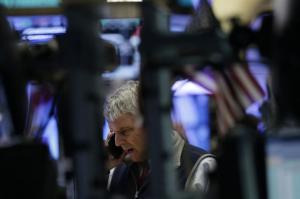April 5 (UPI) — Crude oil prices lacked clear direction in early Thursday trading as markets balanced between declining U.S. inventories and potential trade war fears.
The U.S. Energy Information Administration reported Wednesday that U.S. crude oil inventories declined by more than 4.5 million barrels, beating the estimates from S&P Global Platts and the American Petroleum Institute.
A market surplus helped pull crude oil prices below $30 per barrel, though Platts said this week the U.S. sector was more or less balanced. EIA data show that U.S. crude oil inventories are at the lower end of the average for this time of year, but gasoline inventories are at the upper limit of the average range.
As U.S. production levels sore, the country is exporting more of its own oil and importing less from foreign sources. Refineries, meanwhile, are gearing up for the production of a summer blend of gasoline for consumers.
“Demand is at a record and globally supplies are tightening and that raises the risk for upward price spikes,” Phil Flynn, the senior market analyst for the PRICE Futures Group in Chicago, said in market commentary emailed to UPI.
On Thursday, however, the U.S. Census Bureau and the U.S. Bureau of Economic Analysis reported the U.S. trade deficit increased $900 million from January to $57.6 billion last month for the highest deficit in a decade. That could undermine the potential in the U.S. economy and present headwinds for U.S. President Donald Trump’s goal of 3 percent growth.
Crude oil prices were moving between small gains and losses for most of overnight trading. The price for Brent crude oil, the global benchmark for the price of oil, was up just 0.04 percent as of 9:16 a.m. EST to $68.05 per barrel. West Texas Intermediate, the U.S. benchmark, was down 0.21 percent to $63.24 per barrel.
Giovanni Stauvano, a commodity analyst at UBS, told UPI that oil “seems to be caught” between a stronger U.S. dollar and concerns on the potential trade war. The strength of the U.S. dollar has an inverse relationship to the price of oil.
The U.S. Labor Department reported, meanwhile, that first-time claims for unemployment increased 24,000 for the week ending March 31. Last week’s claims were revised up by 3,000 and the four-week average, a less-volatile metric, increased by 750.
Markets in general have been influenced by fears of a trade war between the United States and China as both sides play chicken with proposals of multibillion-dollar tariffs. Movements in the equities markets have spilled over recently into commodities. Dow futures point to slight gains for Thursday.
In a critique of trade policies embraced by U.S. President Donald Trump, Jamie Dimon, the CEO at JPMorgan Chase, warned that “anything that starts to resemble a trade war creates risk and uncertainty to the global economic system.”
Elsewhere, while the energy sector has improved considerably since the downturn that caused members of the Organization of Petroleum Exporting Countries committing to a tighter market, analysis from consultant group Wood Mackenzie showed caution over spending on new projects.
Jessica Brewer, a principal analyst at Wood Mackenzie, said operators are spending more on mature basins, expansions to existing infrastructure or on projects that can be tied in to nearby producers. Less is being spent on new oil and gas field developments.

COMMENTS
Please let us know if you're having issues with commenting.